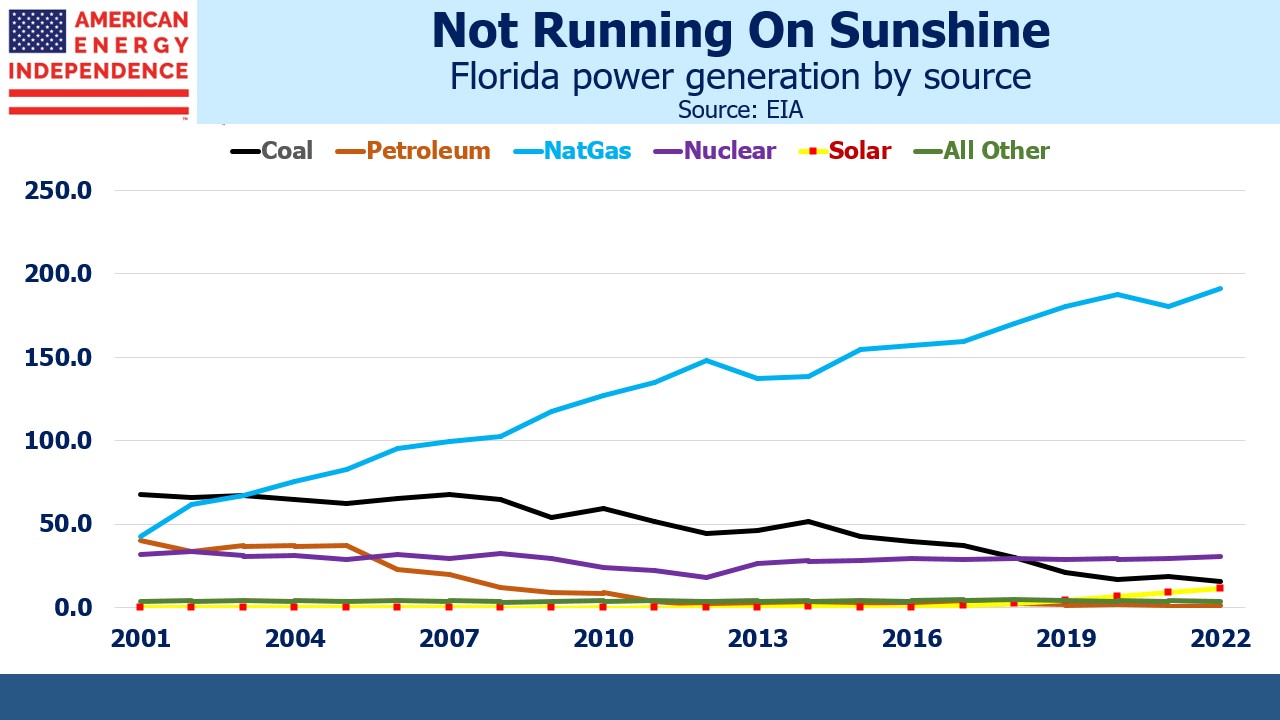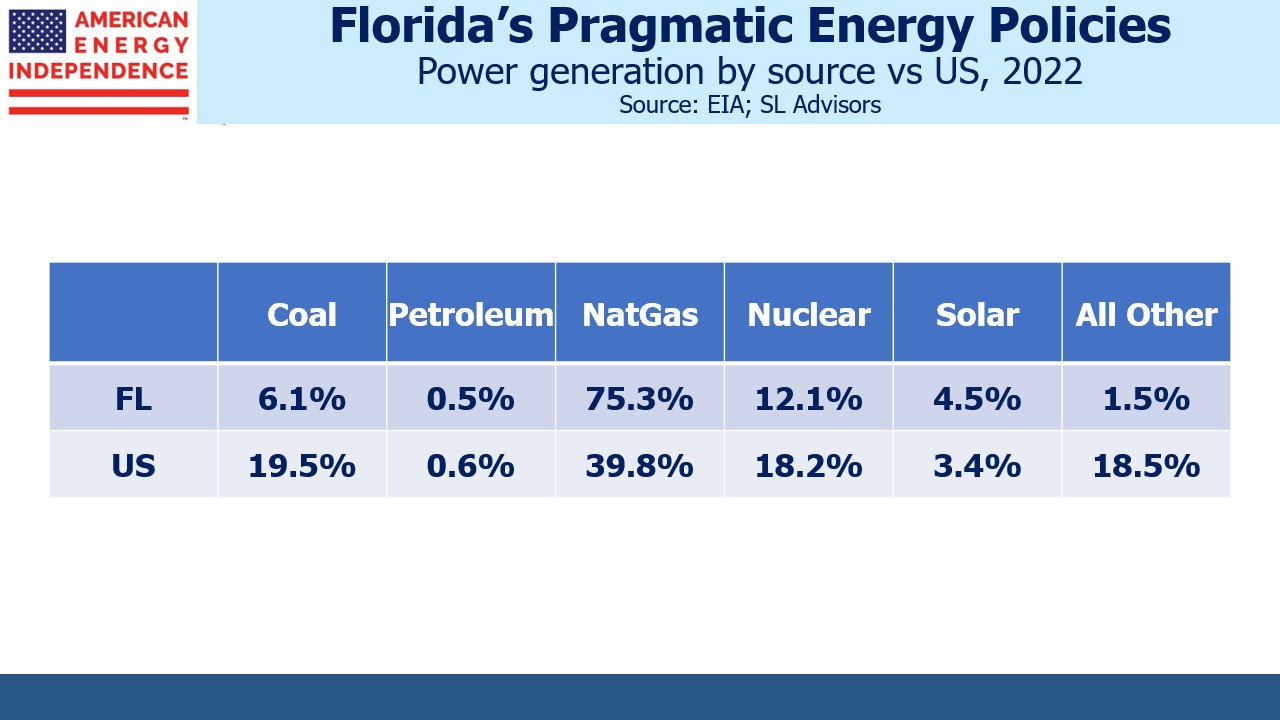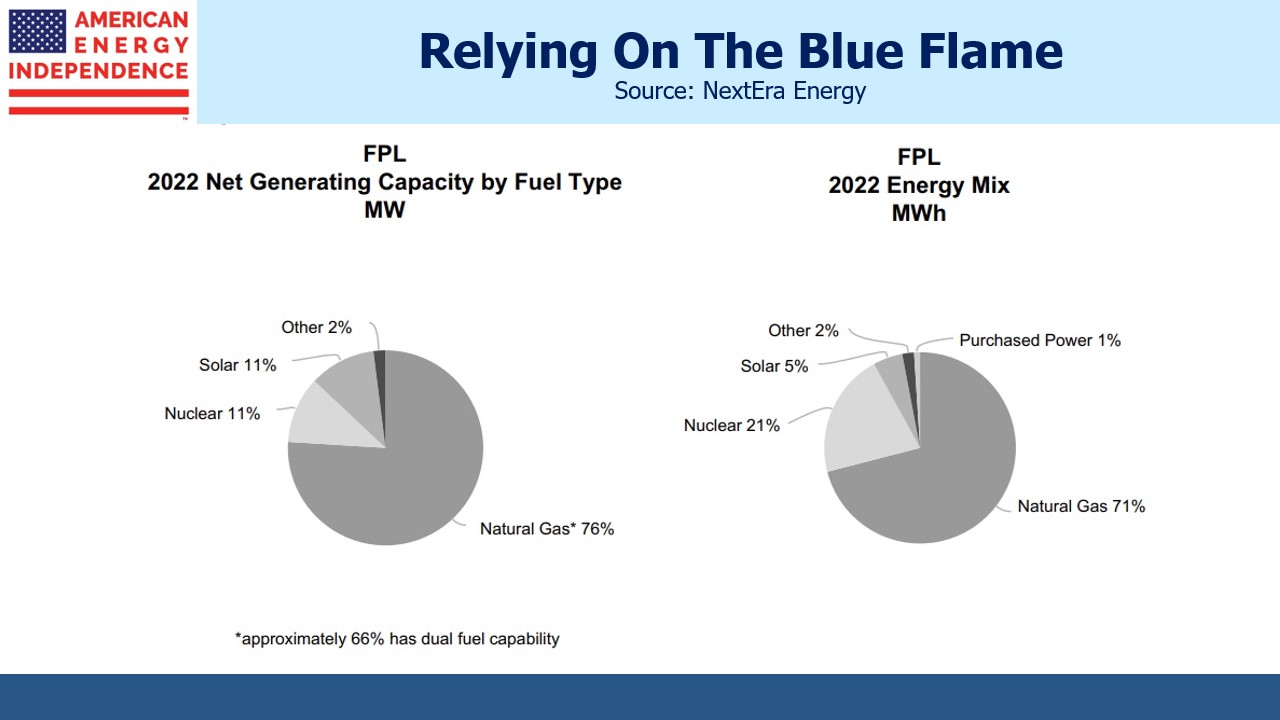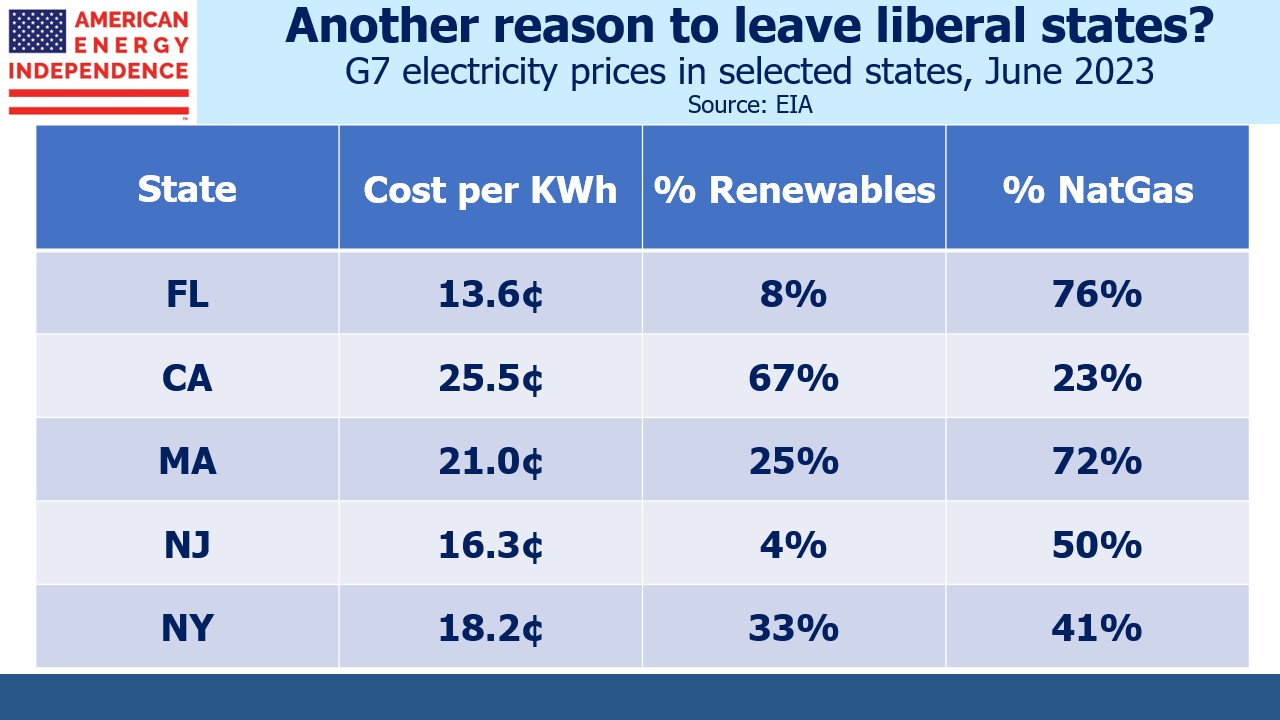The Sunshine State Runs On Natural Gas
If you google “Florida solar” or “Florida natural gas”, both searches return around 150 million results. NextEra Energy (NEE), which owns Florida Power and Light (FPL), the utility that covers much of the state, is targeting zero emissions by 2045. Their 2022 ESG report says FPL expects to quadruple its solar generation capacity by 2031. They currently operate 63 solar sites across the sunshine state.

As its nickname suggests, Florida is well situated for solar power. Casually following the announcements of new solar installations and battery centers to back them up, one might think the state is largely powered by the sun. But as the Energy Information Administration (EIA) recently noted, 75% of Florida’s electricity comes from natural gas.

The biggest change in Florida’s sources of power generation over the past decade has been the increase in its use of natural gas, which generated 191 Terrawatt hours (TWh) last year, 53 TWh more than in 2012. This 2.6% annual growth rate pales against solar’s 50.3% annual rate over the same time. But growth rates starting with a very small base number often look deceptively high. Renewables fans use this mathematical sleight regularly to overstate their impact. Last year solar power generated 11.4 TWh for Floridians. Even the year-on-year increase of 2.4 TWh was less than a quarter of the jump in natural gas. And it’s safe to say that solar growth rate will not sustain anything close to 50%.

Florida relies on solar power for 4.5% of its electricity, a little higher than the US at 3.4%. Generation over the past decade has grown at a 1.6% annual rate, three times the US at 0.5%. As a Florida homeowner I think FPL is getting it right. They’re delivering reliable power at a reasonable price. Their mix of sources roughly matches Florida’s, since they’s the state’s biggest provider. Also note that solar is 11% of capacity but only 5% of supply. Solar and wind tend to run at 20-30% of capacity (offshore wind can be higher). Florida’s solar may run higher because it is usually sunny, but after each glorious sunset those solar panels stop working.

NextEra’s ESG document is fortunately not being implemented in a way that’s harming consumers, because adding nuclear’s 12% share means 87% of the state’s electricity comes from reliable sources.
Liberal states have higher electricity prices, partly because they are adopting more stridently anti-fossil fuel policies. More renewables mean more costly power. New York won’t let new buildings connect to natural gas. Massachusetts has high prices even though their reliance on natural gas rivals Florida. This is because they’ve blocked the new pipelines and storage facilities that they clearly need, limiting their benefit from low domestic prices. Instead, they import liquefied natural gas (LNG) and therefore have to compete on the global market at much higher global prices.

Florida’s use of coal has dropped by two thirds over the past decade. China plows ahead with new coal burning power plants at the rate of around two per week. They’re building six times as many as the rest of the world. Climate extremists in liberal states drive energy policies that impose higher costs on their own citizens and any modest benefit in reduced emissions is swamped by China’s actions.
US residential solar is losing momentum, because of higher interest rates as well as a sharp drop in the rebates California residents can earn for sending surplus solar power back to the grid. Wells Fargo estimates installations this year will be up only 3% versus last year and is forecasting a 13% drop next year. The EIA expects cheap natural gas to cause a slight drop in electricity prices next year. Florida should benefit more than most. Massachusetts probably won’t.
Tesla offers installation of photovoltaic roof tiles that don’t look like ugly solar panels arrayed on top of your house. The WSJ recently interviewed two homeowners happy in spite of long delays. But volumes are far below the company’s forecast of five years ago and the story suggests Tesla severely underpriced the jobs. Solar really isn’t that cheap, especially in northern states.
Job growth in Florida is double the rate of New York and New Jersey, and 50% faster than Massachusetts and California. Remote work is allowing Americans to spread out, and they’re choosing Republican states because they’re generally better run and more pro-business.
Long-time Florida residents often express the fear that “northern liberals” will turn Florida blue. The opposite has happened, because political conservatives are generally the ones that move. My golf club in NJ has seen an increase in members moving to Florida. Few voted for Democrat governor Phil Murphy. This is why migration south has created a liberal shift in states like New York and New Jersey instead. Energy policies are starting to reflect this.
More By This Author:
Fewer MLPs And American ExceptionalismAn Uncontroversial MLP Merger
Alerian MLP Fails Its Investors Again
Disclosure: We are invested in all the components of the American Energy Independence Index via the ETF that ...
more


